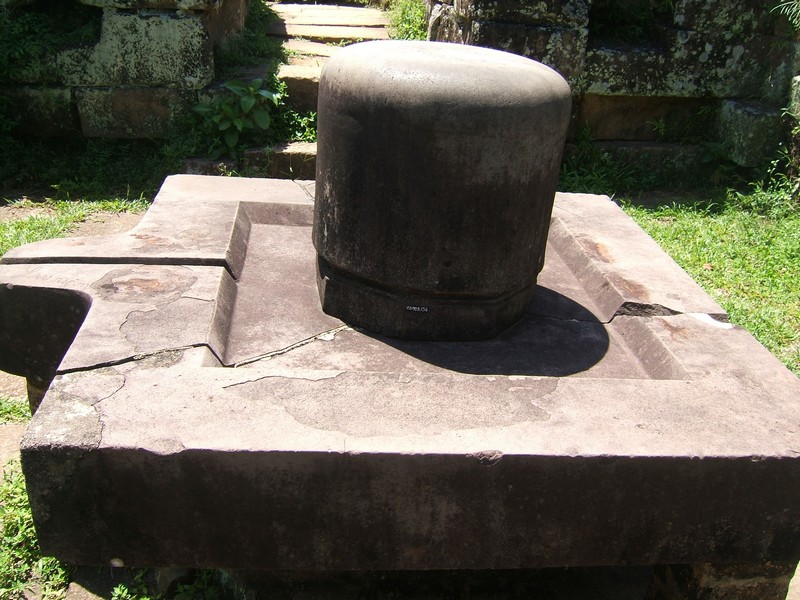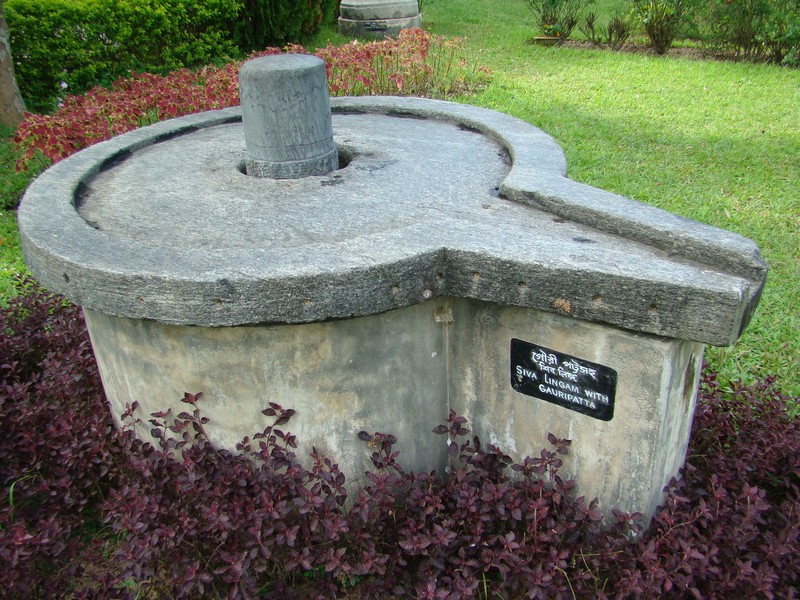(#wanderlusttips #linga #yoni) Traditional beliefs date back to the much simpler times of centuries years. People knew that the wellbeing of all species relies on the perfect balance of yin and yang. These are symbolized by the female sexual organs (Yoni) and the male counterparts (Linga) and worshipped as a part of an ancient belief that became part of established religions. Hinduism, which bears a strong traditional nature, Linga and Yoni take on human forms and are worshipped.
[rpi]The origin of Linga and Yoni
The valley of the Indus River in India is home to the Sumerian and Dravidian people who worship the clitoris and the mother goddesses based on the knowledge that the source of all creation is the merging of the female and male genitals symbolised by Linga and Yoni. In Hinduism Linga and Yoni are both embodied by the principle god Shiva. Legend has it that, Shiva appeared for the first time as a phallus shaped fire pile symbolising creation, replication and development. Linga and Yoni merge to create a god with both yang (Linga) and yin (Yoni) features. In this form the couple is often worshiped in Hindu towers.

As Hinduism is practiced across Asia the symbolic couple does not only appear in places of worship in India, but across the continent including Vietnam. The Vietnamese traditional version of Linga and Yoni is No-Nuong, celebrated in the “linh tinh tinh phoc” festival in the “du di” shrine in Tu Xa Village, Lam Thao District, Phu Tho Province. On the night of the 11th and the dawn of 12th of January of every lunar year, cu thu tu (the old leading man) offer painted wooden vaginas and penises to a number of young men and women. In the dark the men touch the wooden vaginas with their wodden penis replicas held by the women three times, creating the “linh tinh tinh phoc” sound. If the pieces merge three times the villagers can expect a great crop that year. In Japan, religions worshiping male and female genitalia are also wide spread. One such example are the ancient procession festivals in Komachi, Aichi Province and in Kawasaki. Large phalluses are carved from wood and carried by numerous people through the streets.
Worshiping reproductive organs does not belong to any one agricultural area, but rather appear in various forms across the cultures of the region.
Linga – Yoni in Champa culture
The most number of Lingas in the South East Asia can be found in the Champa culture of central Vietnam. The Linga forms created by Champa artists are relatively similar to an actual penis, while other Yoni are somewhat stylized versions. Cylindrical sculptures are the most typical and can be found in Hoa Lai, Ponagar, Chanh Lo Towers. Some Linga have four edges, with the top bunching up like a lotus flower like the one in Po Rome Tower. Then there are Linga that consist of two parts: the upper part is shaped like a cylinder while the lower part is a square block like in the western tower of Ponagar Temple. Other Linga have three parts: the upper part is the shape of a cylinder, the middle is shaped like an octagon and the lower part is a square block. This is the most common Linga in Cham culture and can be found in My Son, Tra Kieu and Binh Dinh.
The most beautiful Linga symbols are the ones engraved on the face of Shiva as in Po Klong Garai Tower, Po Sanu Tower and most recently put on display in My Son at the end of 2012 (this artefact has been named a national treasure). Its name is Mukha-Linga. Sometimes, instead of engraving the shape onto depictions of Shiva, Cham people create a Linga crown known as Kosa or they created a statue to form the head of a deity and attached it to the top of Linga (one such example is the golden statue of Shiva’s head in Dai Loc District, Quang Nam Province, which is now displayed in Quang Nam Museum). Adding a crown or engraving Shiva’s face with phallic symbols shows respect to the great God.
The Yoni form in Cham culture is also diverse: rectangular, squared, round shapes or decoration shaped like women’s breasts symbolise femininity.
Linga and Yoni in Cat Tien Sanctuary and the Oc Eo culture
The largest Linga statue in South East Asia was discovered in Cat Tien in Lam Dong Province. Archaeologists believe that the relic does not belong to Champa culture but is from the South of Tay Nguyen, where Hinduism used to be practiced.
Archaeologists have found a cluster of temples, towers and shrines in this sanctuary. Remarkably, they also discovered a large number of Linga and Yoni in the area. Five such statues were unearthed bearing both symbols. In addition, 18 single Linga and 8 single Yoni pieces were found. A large number of the sculptures were made out of sandstone, but gold, silver, quartz and ceramic ones were also found.

The largest of them all were located in the centre of the main tower. The Linga here is 2.1m high and vertical. It is divided into three parts: the upper part a cylinder, with a polished round top embossed with a line running to the tip; the middle part is shaped like an octagon and the lower part is square, with a width of 68cm on each edge.
The pedestal on which the Linga sits is a large scale square shaped Yoni, with a width of 2.26m and a thickness of 24cm on each edge. One of the edges of the Yoni has a tentacle measuring 70cm. The upper face of the Yoni is carved and surrounded by an elevated border. When rituals were held to wash the Linga, water would be poured into the Linga’s head, which would flow all the way down to the Yoni surface and run out through the tentacle. The people of the time believed that drinking this holy water would bring good luck and a lot of offspring. The ritual of washing the Linga and drinking the holy water from the Yoni tentacle is still being practiced today during the Kate festival celebrated by the people in Central Vietnam.
Archeologists also found traces of the Linga and Yoni symbols in the Oc Eo culture of the Mekong Delta. At an excavation site numerous Linga and Yoni couples dating back to the 2nd century BC to the 12th century AC were discovered. A majority of 86 of the couples were made of terracotta, stone and quartz.
The Linga and Yoni symbol in the North
Hindu temples and towers have had a strong influence on the culture in South Vietnam. In the North, the influence of Buddhism is stronger. There are no Champa temples and towers in North Vietnam. However, following conflicts between Champa and the Dai Viet there was cultural exchange between the two. Most significantly so in the late 10th century during the march south of King Le Dai Hanh in 982. Experts believe that royal tombs in Hoa Lu feature some stylized Linga symbols.
In 1020 during the Ly dynasty King Ly Thai Tong led his troops to fight Chiem Thanh and cultural exchange became more frequent and Linga symbols starting appearing in the north more frequently.
In Thanh Hoa Province researchers have discovered wooden Linga symbols in Lach Truong and Linga shaped stones in Mau Pagoda (Cam Thuy) and in Nam Pagoda (Dong Son).
But the biggest and most beautiful Linga is the stone column in Dam Pagoda (Bac Ninh Province). There are some square holes in the top of the column that experts believe was used to support another architectural element. It is likely though that the initial function of the column was to symbolise a Linga before its functioned changed to a support structure.
The column is made of sandstone, a popular material of the time used to make Linga by Cham people. The stone column was built in 1105 when the Ly dynasty employed numerous Cham prisoners to build pagodas and towers. This could be the reason whey there are only a few Linga symbols in Dam Pagoda’s courtyard. The stone column in Dam Pagoda has the shape of a Linga with a cylindrical upper part and a square lower part. The middle part is very short but big enough to see that it has eight bevelled corners indicating eight edges. The upper part of the cylinder has engraved lines, surrounded by a marker line symbolising fertility in Champa Linga.
The body of the stone column in Dam Pagoda is engraved with the shape of two dragons of the Ly dynasty, which in the Dai Viet culture were the symbol of the King. It is unclear if Cham craftsmen engraved the King symbol into the stone Linga in Dam Pagoda as a way of showing devotion to Shiva God or whether Cham Kings themselves were engraved in the Linga. This makes the stone column in Dam Pagoda an unsual Linga. It is possible that it is a Mukha-Linga. The Linga in Dam Pagoda remains controversial, but it is a precious piece of art and evidence of the influence of the Cham culture in Vietnam’s national heritage.
Photo credit: Nguyen Van Cu
Asoc. Prof. PhD Trinh Sinh | Wanderlust Tips | Cinet

